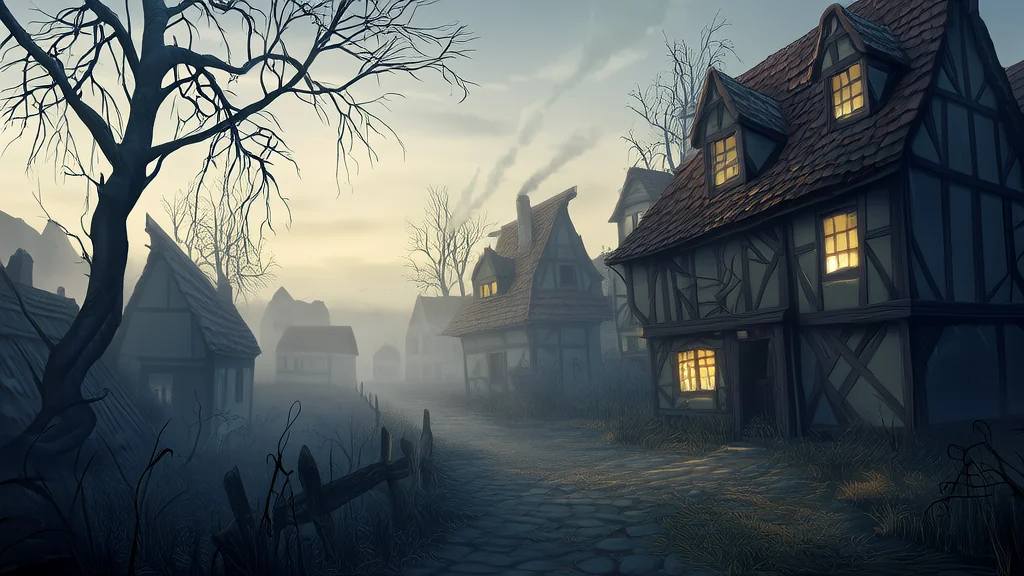🔮 Weird Tales & Urban Legends
The Vanishing of Eli and the Hush That Followed in Hollowbrook

The town of Hollowbrook had always been quiet, nestled in a valley where the fog rolled in like a living thing. It wasn’t the kind of place that attracted tourists or journalists. Most people who passed through didn’t stay long. They’d say the air felt heavy, as if the sky itself was holding its breath. The locals called it "the hush," and they never spoke of it much.
It started with a child. A boy named Eli, who went missing on his way home from school one autumn afternoon. His backpack was found near the old mill, but there was no sign of him. The police searched for days, combing the woods and the riverbanks, but nothing turned up. The townspeople whispered that he had wandered off to play, that he’d come back when he was ready. But he never did.
Then came the others. A farmer named Harlan disappeared while checking his traps in the early hours of dawn. His boots were left by the stream, but his body was never found. A teacher named Clara vanished after walking her dog at dusk, leaving behind a half-finished letter on her desk. Each disappearance was different—some happened in the daylight, others in the dead of night—but all followed the same pattern: they simply stopped existing.
No signs of struggle, no footprints leading away, no clues. Just silence. The town grew uneasy, but the elders insisted it was just the way things were. “Some people are meant to be lost,” they said, eyes distant. “They don’t want to be found.”
A journalist named Mira arrived in town after hearing about the disappearances. She was young, with a notebook and a camera, determined to uncover the truth. She stayed in the old inn, where the floorboards creaked like groaning bones. She interviewed the townsfolk, but most of them were tight-lipped, their faces etched with something close to fear. Only an old woman named Mrs. Grady, who lived on the edge of town, spoke freely.
“They go into the woods,” she said, her voice barely above a whisper. “Not all of them, but some. They follow the light.”
Mira didn’t understand what she meant. But that night, she saw it—a soft, golden glow flickering through the trees, far beyond the village. It wasn’t firelight. It wasn’t anything she could explain. She followed it, stepping carefully over roots and stones, until the forest closed in around her. The air thickened, and the trees seemed to lean closer, watching.
She reached a clearing, and there, standing in the center, was a circle of stone pillars, each carved with symbols she couldn’t recognize. In the middle of the circle stood a figure, cloaked in shadows, its face hidden. It turned slowly, and for a moment, Mira thought she saw a reflection of herself in its eyes. Then the light faded, and the figure was gone.
She ran back to the inn, heart pounding, but when she returned the next day, the clearing was gone. The trees stood as they always had, no signs of the stone circle or the glowing light. She asked the townspeople about it, but they looked at her as if she were mad.
That night, Mira wrote everything down. She sent her notes to a colleague, hoping someone would believe her. But the next morning, she was gone. Her room was empty, her belongings untouched. The only clue was a single page left on her desk, the words scrawled in frantic handwriting: *“They’re not lost. They’re waiting.”*
The town of Hollowbrook remained as it always had—quiet, still, and watchful. No more disappearances occurred, but the hush lingered. Some claimed that the ones who vanished had found something, a place where time moved differently, where the world ended and another began. Others believed they were never truly gone at all, just unseen, lingering between the spaces of the real and the imagined.
And so, the story of Hollowbrook continued, passed down in hushed tones, a tale of those who walked into the unknown and never came back. But maybe, just maybe, they were waiting for someone to find them.
Published on en
🔗
Related Sites
- AI Blog — AI trends and tech news